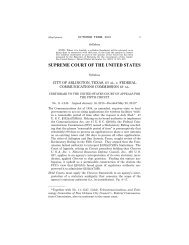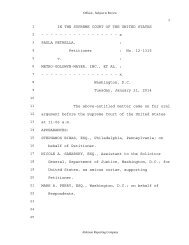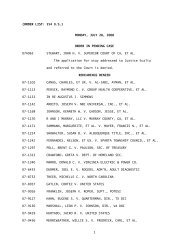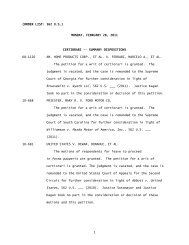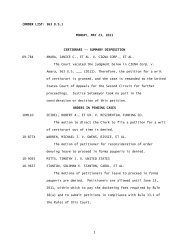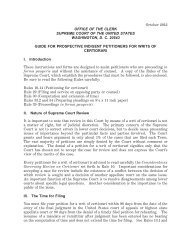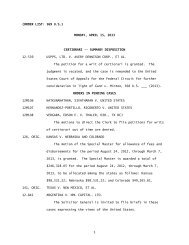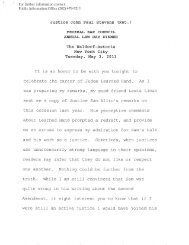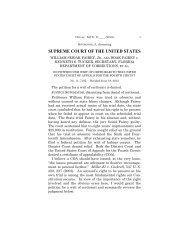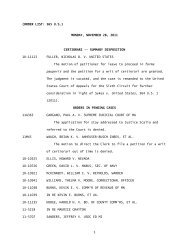12-398 Association for Molecular Pathology v. Myriad Genetics, Inc ...
12-398 Association for Molecular Pathology v. Myriad Genetics, Inc ...
12-398 Association for Molecular Pathology v. Myriad Genetics, Inc ...
Create successful ePaper yourself
Turn your PDF publications into a flip-book with our unique Google optimized e-Paper software.
2 ASSOCIATION FOR MOLECULAR PATHOLOGY v.<br />
MYRIAD GENETICS, INC.<br />
Opinion of the Court<br />
the United States Court of Appeals <strong>for</strong> the Federal Circuit.<br />
I<br />
A<br />
Genes <strong>for</strong>m the basis <strong>for</strong> hereditary traits in living<br />
organisms. See generally <strong>Association</strong> <strong>for</strong> <strong>Molecular</strong> <strong>Pathology</strong><br />
v. United States Patent and Trademark Office, 702<br />
F. Supp. 2d 181, 192–211 (SDNY 2010). The human genome<br />
consists of approximately 22,000 genes packed into<br />
23 pairs of chromosomes. Each gene is encoded as DNA,<br />
which takes the shape of the familiar “double helix”<br />
that Doctors James Watson and Francis Crick first described<br />
in 1953. Each “cross-bar” in the DNA helix consists<br />
of two chemically joined nucleotides. The possible<br />
nucleotides are adenine (A), thymine (T), cytosine (C), and<br />
guanine (G), each of which binds naturally with another<br />
nucleotide: A pairs with T; C pairs with G. The nucleotide<br />
cross-bars are chemically connected to a sugar-phosphate<br />
backbone that <strong>for</strong>ms the outside framework of the DNA<br />
helix. Sequences of DNA nucleotides contain the in<strong>for</strong>mation<br />
necessary to create strings of amino acids, which<br />
in turn are used in the body to build proteins. Only some<br />
DNA nucleotides, however, code <strong>for</strong> amino acids; these<br />
nucleotides are known as “exons.” Nucleotides that do not<br />
code <strong>for</strong> amino acids, in contrast, are known as “introns.”<br />
Creation of proteins from DNA involves two principal<br />
steps, known as transcription and translation. In transcription,<br />
the bonds between DNA nucleotides separate,<br />
and the DNA helix unwinds into two single strands. A<br />
single strand is used as a template to create a complementary<br />
ribonucleic acid (RNA) strand. The nucleotides on the<br />
DNA strand pair naturally with their counterparts, with<br />
the exception that RNA uses the nucleotide base uracil (U)<br />
instead of thymine (T). Transcription results in a single<br />
strand RNA molecule, known as pre-RNA, whose nucleotides<br />
<strong>for</strong>m an inverse image of the DNA strand from which



